► Controversial looks
► Yet practical and enjoyable to drive
► The X7 is a premium SUV done well
The BMW X7 is what you can get when you take a BMW 7 Series, swap out the saloon body for an SUV shell, add in a couple of seats and give it the kind of off-road ability that looks great in the brochure but will almost certainly never be tested in the real world. In other words, it’s the biggest, baddest SUV that BMW makes – and for 2023 it’s had a facelift.
A recent trip to California provided a chance to test the facelifted X7 in its natural environment – not only is the X7 made in Spartanburg, South Carolina, but BMW’s largest SUV is a frequent sight on West Coast roads, unsurprising given the US is its biggest market with over a quarter of global sales.
We tested the entry-level X7 40i petrol model – at £87,050 it carries a £600 premium over the 40d turbodiesel – as well as the new M60i model that arrived with the facelift.
Not just about new headlights
Further visual tweaks include the ‘Iconic Glow’ ambient lighting around the grille and, wait for it, 23-inch alloy wheels – the largest factory spec rims that BMW has ever supplied. If that’s not your cup of tea then rest assured that the positively tiny 21-inch versions are standard. BMW’s made some tweaks at the rear end, with 3D sculpted lights and a full-width chrome bar that sits underneath a glass cover.
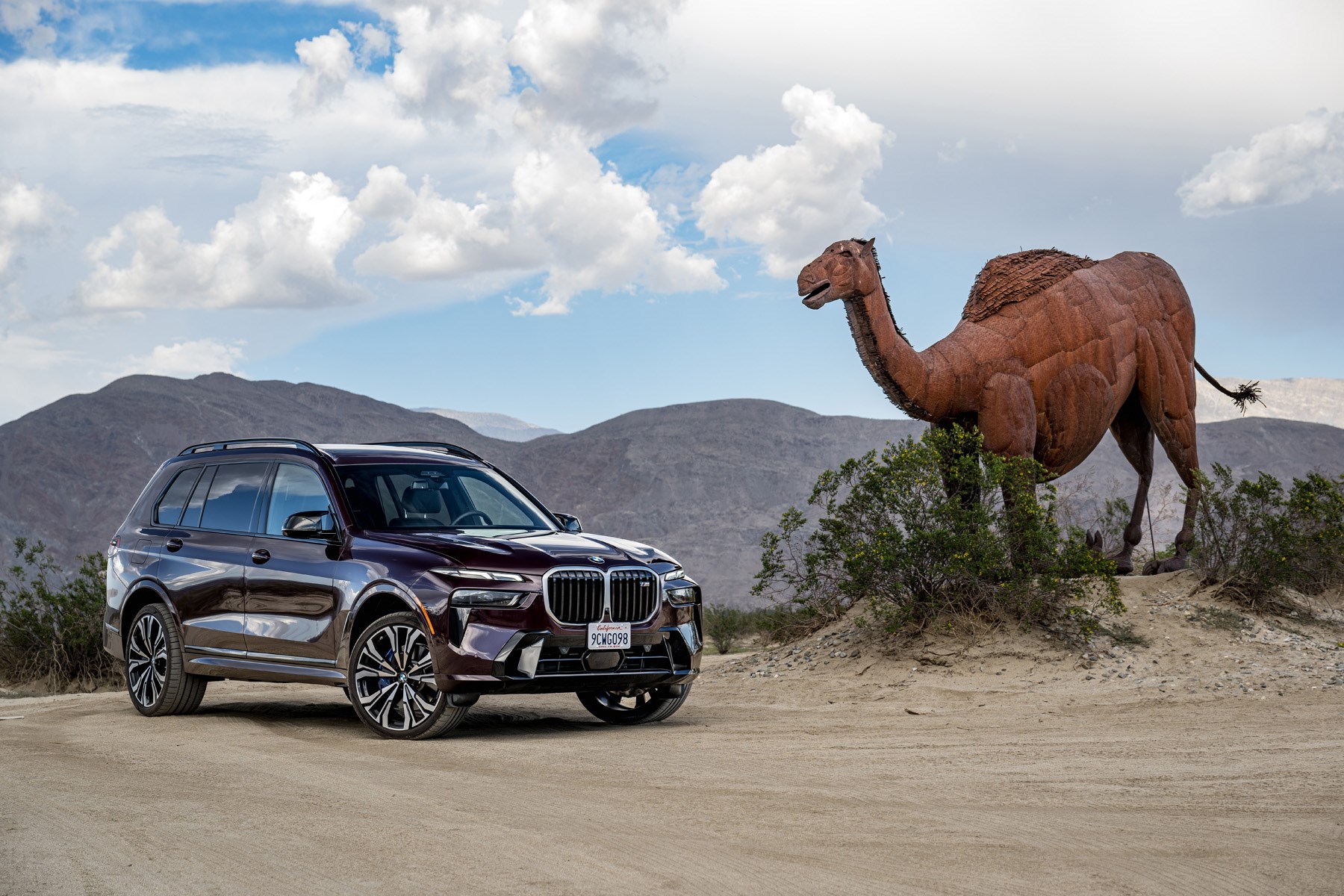
Inside, the X7 gets the same infotainment setup as the rest of the 7 family. That means a 12.3-inch digital instrument panel replacing traditional dials, as well as a 14.9-inch curved central screen that runs BMW’s latest iDrive operating system, 8.0. Predictably, it’s rather brilliant and while most users will take some time to get used to its myriad functions, the interface and quality of software design is superb.
What are those engines like?
For the 40i, a familiar 3.0-litre turbocharged straight six is now equipped with the 48-volt mild-hybrid system and benefits from updates to valve control, fuel injection and ignition systems.
The result is a useful performance bump to the tune of 47bhp and 52lb ft with peak figures of 375bhp and 383lb ft – though the mild-hybrid system can help boost that latter figure to 398lb ft. WLTP fuel economy figures of 26.7 to 29.4mpg compare with 24.9 to 25.8mpg previously.
For those wondering whether the 40i is fast enough: it is. Its 375bhp might be blunted by a chunky 2415kg kerbweight (up 95kg on the pre-facelift model) but mostly the X7’s focus on luxury and refinement encourages a gentler driving style, so our overwhelming impression was of more than sufficient performance for the task in hand. Yes, we might have come to a different conclusion had we been flat-out on an autobahn but for general driving the X7’s smallest petrol engine felt more than up to the task.
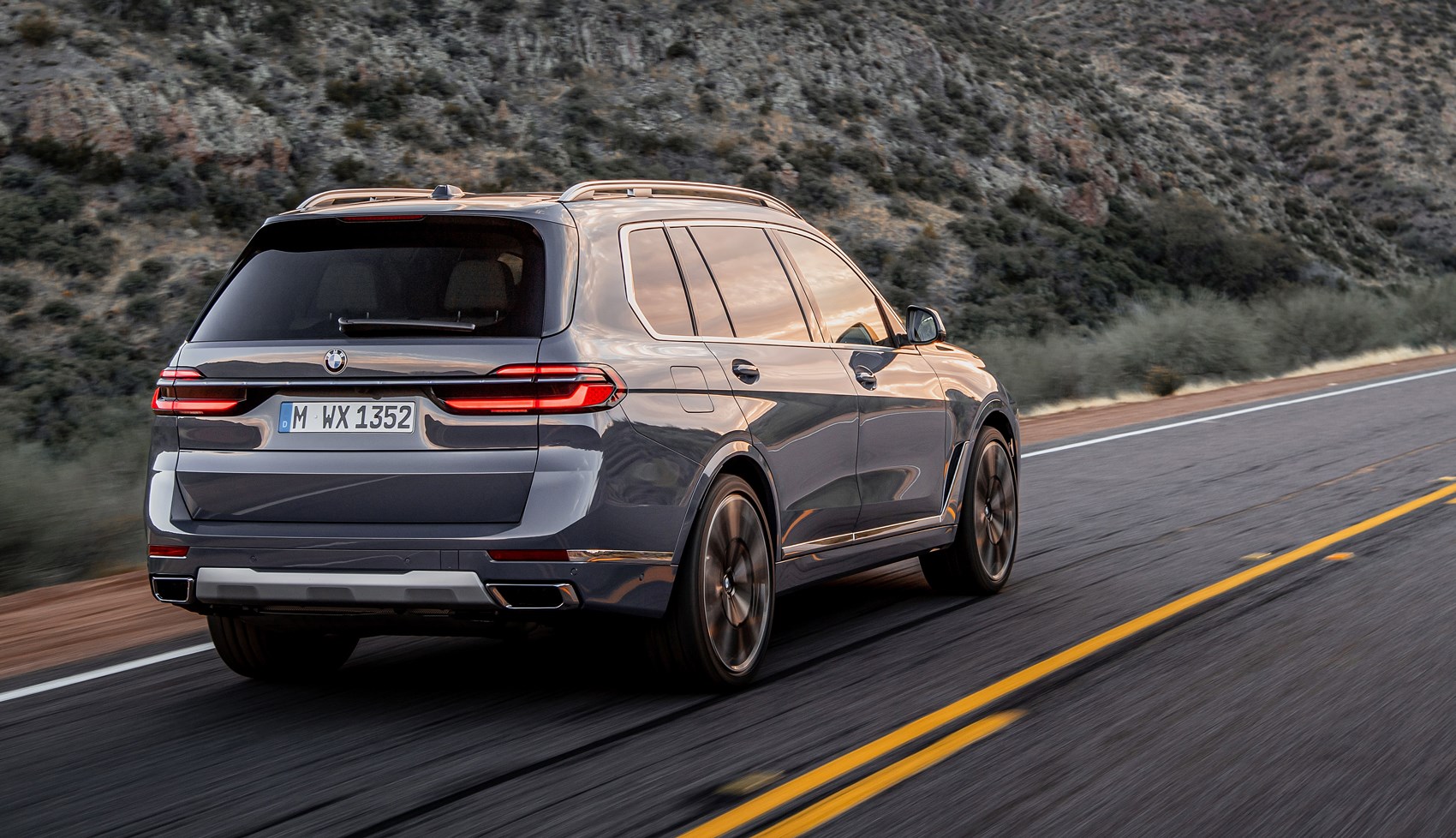
This engine is smooth and quiet, doesn’t feel short of breath when asked to sprint up to speed joining freeway traffic and pulls flexibly from low revs. This last point is crucial – in the past we’ve said the low-rpm muscularity of a turbodiesel better fits this brief, and while we’re sure the 40d would prove a compelling choice, its petrol sibling gels nicely with this package.
As for the top-dog M60i xDrive, it’s got all the guts you’d expect from a 4.4-litre twin-turbo V8. Brawny low down and reasonably keen to rev, its 530hp and 553lb ft torque output propel the 2.7-tonne X7 from 0-62mph in just 4.7 seconds and onto a top speed of 250km/h. Sounds the part, too, with a M-Division rumble emanating from under the humongous bonnet.
Does it go around corners?
In addition to standard air suspension and optional 23-inch alloys (a BMW first), our test car was equipped with rear-wheel steering and active roll stabilisation, so while first impressions suggest the X7 is too comfort-focussed to handle deftly, it actually proved surprisingly capable when pushed harder on twistier roads – at least for something of this size and weight.
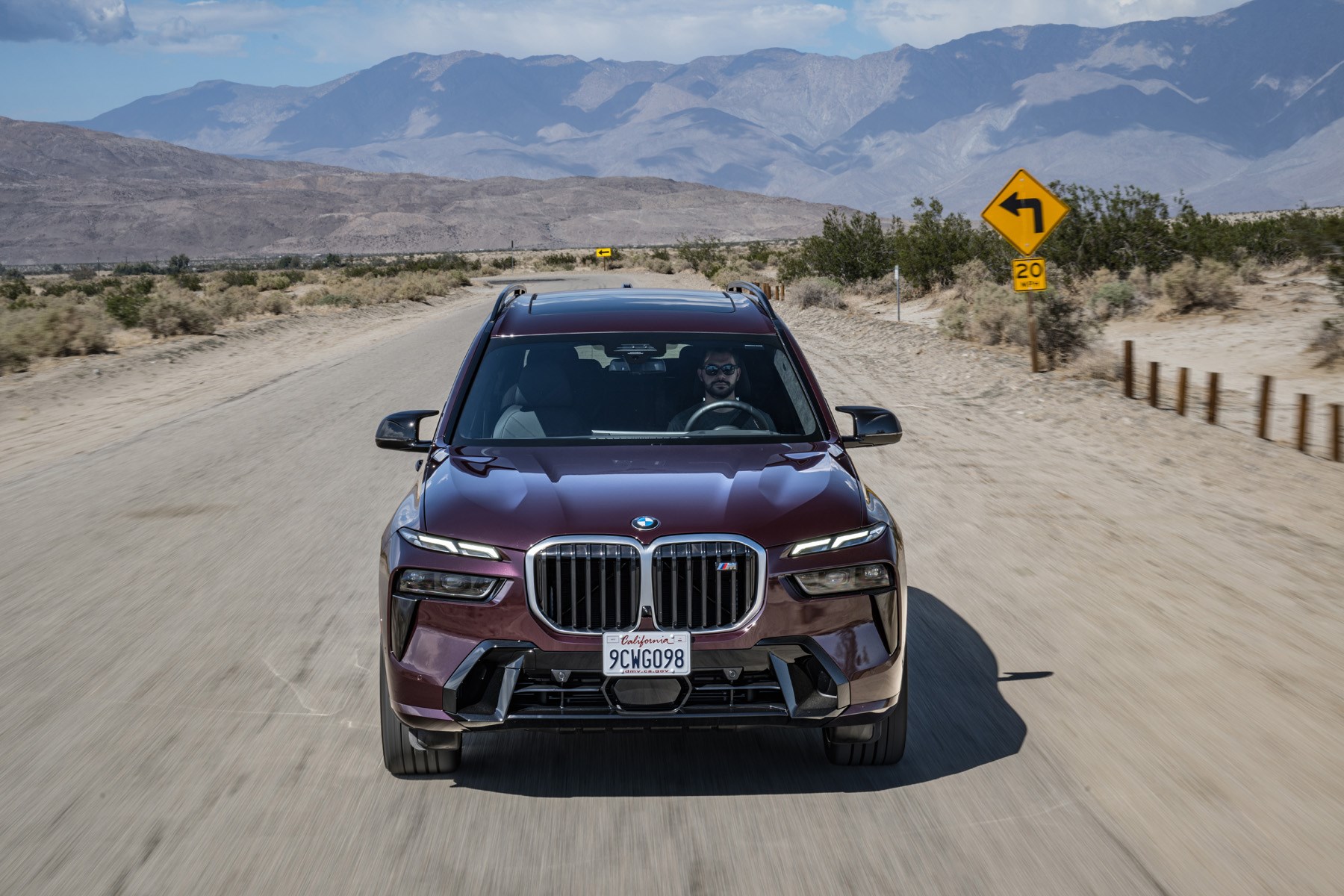
There was, however, some ‘head toss’ in the suspension’s standard Comfort setting (the lateral rocking that often afflicts SUVs), which initially led us to suspect there was no anti-roll control fitted at all. Switching to Sport dialled that out, making for more coherent handling while still preserving much of the base mode’s refinement.
Overall though, it’s the isolation, refinement and comfort that’s most impressive here.
Does the X7 actually go off-road?
It does. Ground clearance of 221mm, all-wheel drive and air suspension that can be raised by up to 40mm should more than cope with most owners’ demands, but BMW is happy to leave the really serious terrain to Land Rover, and barely mentions off-road capability in the press material.
It’s also telling that the xOffroad package is optional, with four off-road modes (the unnecessarily pre-fixed xSand, xRocks, xGravel and xSnow), mechanical diff lock and sump guard.
Can it do tip runs? Carry three generations at once?
It can. The X7 comes as standard with seven seats. Row two can be moved forwards and back by up to 14.5cm so you can flex the ratio between space for those occupants, or for people or luggage behind. The seat backs also split 60/40 as standard.
Row two tilts forward to provide access to row three. It’s a bit of a squeeze getting back there and out again, but there’s decent space for two full-size adults once seated, and even armrests, cupholders, heated seats and the option of air vents and a climate-control panel.
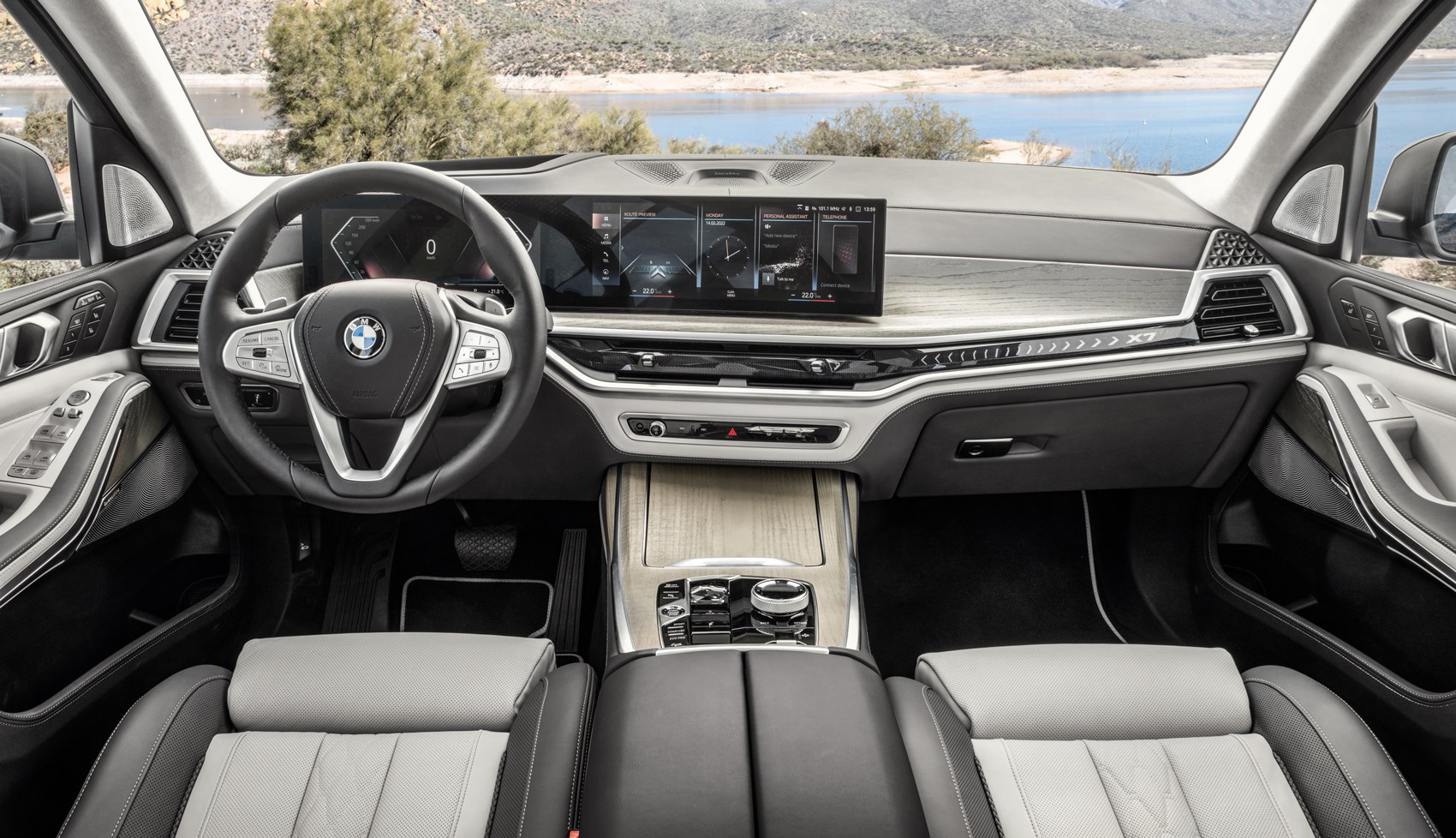
Row three also includes Isofix child-seat mounting points – not all seven seaters do, which means child seats have to be locked into row two, with the knock-on that accessing row three is harder for other passengers. Not in the X7. So if you’ve got a young family and regularly carry more than five, the X7’s rear Isofix is a real bonus.
With all three rows raised, the boot is smaller than a Golf’s at 326 litres (the electric split tailgate actually helps to stop the stuff you’ve crammed in falling out) but row two and three can electrically lowered at the press of a button, providing 750 litres and 2120 litres of space respectively.
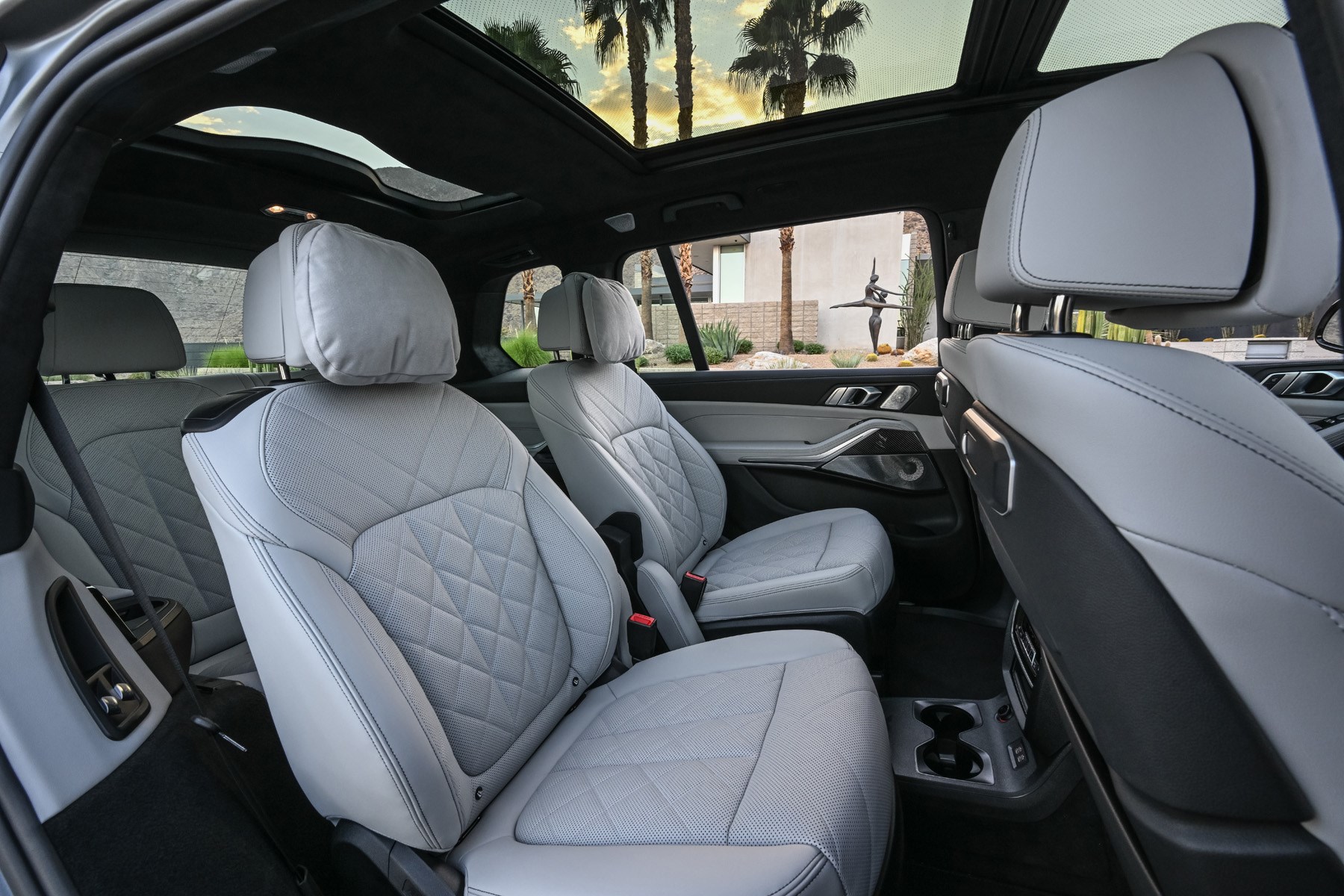
A more opulent six-seat layout is available, which switches the middle-row bench for a pair of captain’s chairs. Clearly, you’ll need to leave one passenger at the kerb and you lose the ability to fold row two completely flat and carry really big loads, but there’s more space and comfort for the two remaining, and the gap between the seats makes getting back to row three easier.
BMW X7: verdict
The X7, particularly in 40i spec offers not just updated technology (as outlined in the M60i review above), but also a useful bump to efficiency and performance. The M60i offers more performance still but for serene wafting with more than adequate performance, there’s much to recommend the X7 40i.